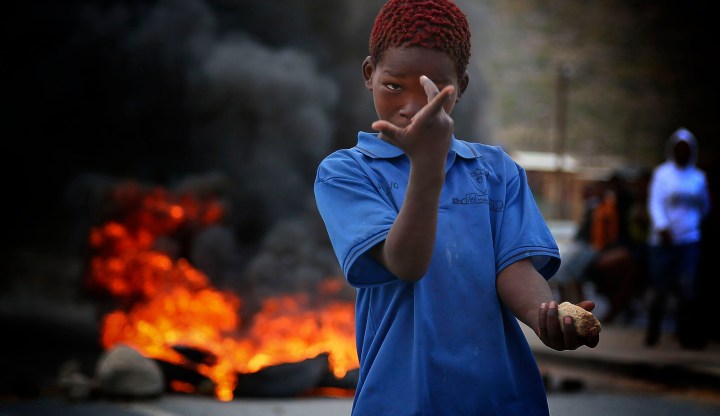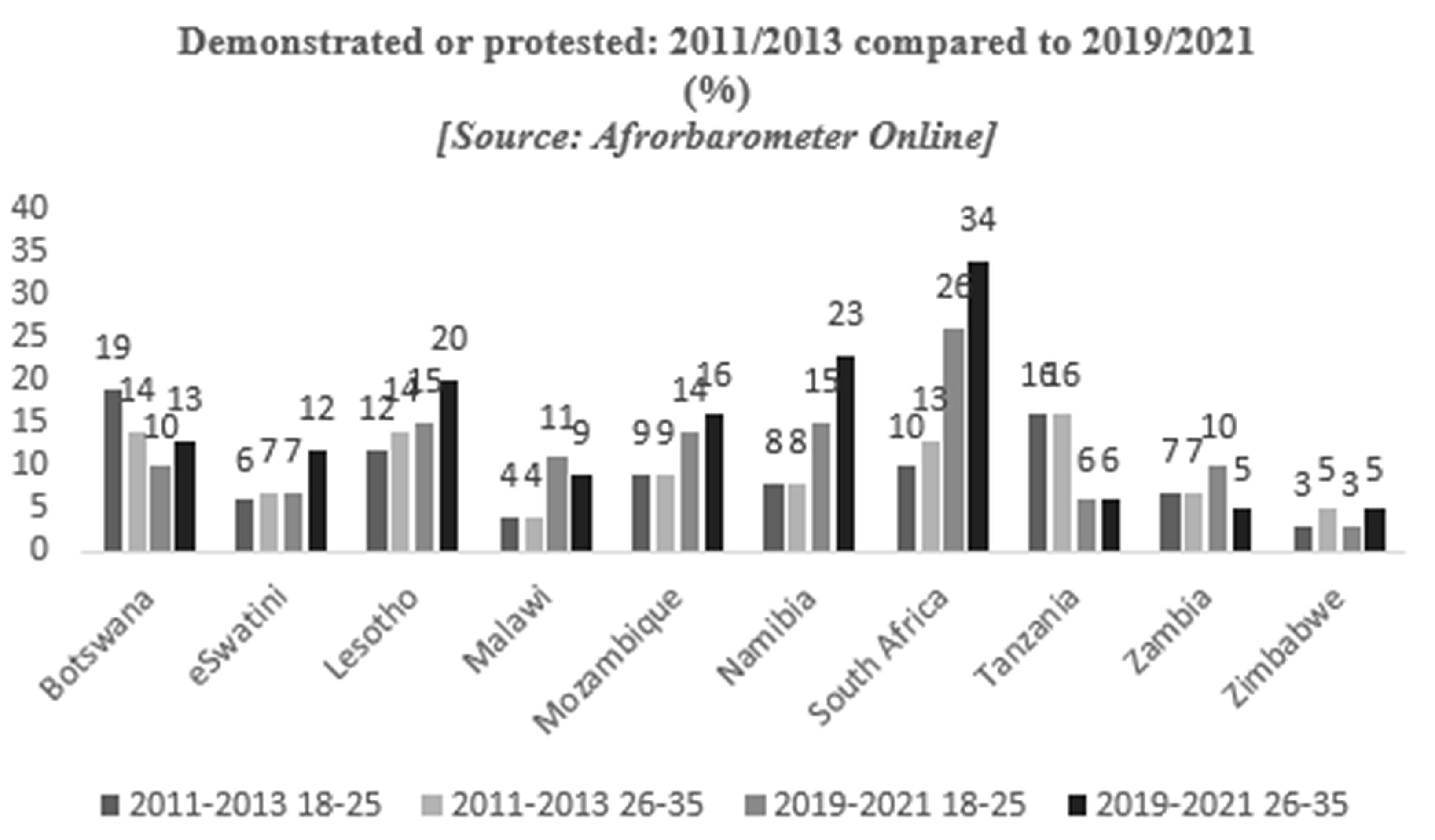SADC YOUTH BULGE OP-ED
‘The pitchforks are coming’ — will young people be wielding them?

Africa will see the largest increase in its population over the next 30 years, growing from about 1.1 billion in 2020 to 2.5 billion in 2050, and the vast majority will be the young. How will they deal with massively growing inequality and economic stagnation? And will pitchforks matter?
‘The problem isn’t that we have inequality. Some inequality is intrinsic to any high-functioning capitalist economy. The problem is that inequality is at historically high levels and getting worse every day. Our country is rapidly becoming less a capitalist society and more a feudal society. Unless our policies change dramatically, the middle class will disappear, and we will be back to late 18th-century France. Before the revolution.” (Nick Hanauer, The Pitchforks Are Coming… For Us Plutocrats)
My title for this article is not original. It comes from a self-confessed “plutocrat”, one of the “zillionaires” (as Hanauer describes them) in the US. It comes from the realisation that the gap between the insanely rich and the poor is growing logarithmically.
And Hanauer’s warning was written in 2014, nine years ago.
Has anything improved?
The Tax Justice Network estimates that somewhere between $21-trillion and $32-trillion are held offshore, and $427-billion in possible tax is lost to tax havens every year; that is a total of $3.8-trillion since Hanauer penned his article.
Visit Daily Maverick’s home page for more news, analysis and investigations
This picture is seen both globally and locally. Southern Africa is no exception. In fact, we are the trailblazers in inequality and impunity.
South Africa is one of the most unequal countries in the world, but it is not unique. Zimbabwe too has gross inequality; with nearly 85% of its citizens in informal employment. It is one of the most unhappy countries in the world on virtually every indicator that exists. However, there are few countries in the Southern African Development Community (SADC) that do not show similar profiles. GDP is no indicator of economic wellbeing in a region where most countries have seen very little growth in GDP between 2009 and 2017, from $1,815 in 2009 to $1,927 per head in 2017.
That is about $5 per day.
Africa will see the largest increase in its population over the next 30 years, growing from about 1.1 billion in 2020 to 2.5 billion in 2050, and the vast majority will be the young. This will be why pitchforks matter.
How will the youth respond to massively growing inequality?
The youth bulge theory
This is an issue that has exercised political scientists since Samuel Huntington in 1996 posed the notion of the dangers of “youth bulges”.
Put simply, countries with very large youth populations will have either a dividend, like China in the past, or a disaster, like perhaps the north African countries in 2010. The concern for political scientists is the probability that a large youth demographic has for political instability, the “pitchfork problem”.
However, this is not merely to have concerns about gross inequality, but also the system that allows this and the way the state is dealing with inequality generally.
Essentially, the youth bulge theory, now with increasing empirical support, argues that countries with large youth populations will experience instability and violence if the following are present:
- The higher the dependency burden, the stronger the effect of youth bulges on political violence.
- The lower the economic growth, the stronger the effect of youth bulges on political violence.
- The greater the expansion of higher education, the stronger the effect of youth bulges on political violence.
- The more autocratic a country, the stronger the effect of youth bulges on political violence.
- The higher the urbanisation rates, the stronger the effect of youth bulges on political violence.
An Afrobarometer study in 2011 argued that the likelihood of protest by African youth was fostered by higher levels of education in the context of economic deprivation and dissatisfaction with democracy. This provided some support for the thesis, but the study pointed out the youth were also less likely to vote, and other studies have shown a comparative lack of agency among the young people of SADC.
There have been few African examinations of the youth bulge theory, but a recent report by Zimbabwe’s Research and Advocacy Unit suggests cause for concern.
The youth bulge in SADC
In SADC, dependency ratios are high, with more than 50% of the populations of 10 SADC countries dependent on their families: Botswana (61%), Eswatini (71%), Lesotho (59%), Malawi (82%), Mozambique (88%), Namibia (68%), South Africa (52%), Tanzania (86%), Zambia (84%) and Zimbabwe (82%).
Unemployment among young people is also high, but this does depend on whether the data are official statistics or the views of the young people themselves. When official statistics and personal views are compared, the difference is startling.

Obviously, full-time employment for young people in SADC means something different than just having some form of employment bringing in money, which is how the states measure unemployment.
The data on education suggest why young people see themselves as unemployed.
The official SADC data for the number of children entering secondary school shows variability across the 10 countries, with highs in Botswana (77%) and South Africa (72%), majorities in Namibia (62%), Zimbabwe (52%) and Eswatini (51%); and low rates in Tanzania (33%), Zambia (28%) and Mozambique (21%).
Much the same pattern emerges when the young people themselves are asked about levels of education.
The youth of Botswana (73%), Eswatini (54%), Namibia (67%), South Africa (67%) and Zimbabwe (60%), all claim to have completed secondary school education or more, according to the Afrobarometer study in 2017. Thus, if majorities of the youth have completed sufficient education to seek work, might their expectations be higher than merely informal employment?
Additionally, urbanisation is happening apace in the SADC region. In Botswana (72%), Namibia (52%), South Africa (67%) and Zambia (45%), significant numbers live in urban areas. Bear in mind, as the north African revolts demonstrated, trouble always starts in the cities.
Youth views about democracy
When it comes to views about democracy, most young people in SADC support democracy as the best way to govern a country.
According to the Afrobarometer study in 2017, 62% of 19- to 25-year-olds and 65% of the 26- to 35-year-old youth groups say this, but few are satisfied with the form of democracy they have: only 18% of both age groups believe that their countries are full democracies. However, larger frequencies are, to some extent, satisfied with the way that democracy is working in their countries, 48% in both the two age groups.
They certainly do not support authoritarian rule: 65% reject one-party rule, 74% reject military rule, and 75% reject one-man rule. Here, bear in mind that only two countries in SADC, Zimbabwe and Eswatini, are regarded as authoritarian states — “Not Free” according to Freedom House in 2017 — with only Botswana, Namibia and South Africa seen as “Free”. Lesotho, Malawi, Mozambique, Tanzania and Zambia are regarded as “Partially Free”.
It should also be pointed out that, of the “Partially Free”, some countries have seen changes of regime — Zambia, Malawi and Lesotho — but Botswana, Namibia and South Africa have all had the same political party governing since independence.
So, there are many indicators that suggest that SADC countries are headed for trouble.
The young people are educated, unemployed, increasingly urbanised (which is usually where trouble begins), living in economic deprivation, dependent on their families and desirous of democracy (but not so happy with what they have got). Few live in frank autocracy, but most live in one-party states, if only because, apart from Zambia, Malawi and Lesotho, no opposition political party has been able to overturn the grip of the party that won independence.
Are young people rebelling?
Bear in mind that this background is based on surveys conducted in 2017, the only year for which it is possible to get data on all countries. Much has happened since then, especially with the Covid-19 pandemic: have the youth become more restless?
One way to answer this question is to go to the Afrobarometer data again and look at just one question that is repeatedly asked:
“Have you ever participated in a demonstration or protest march (once or twice, several times, or often)?”
It is worth looking at this question in several ways: over time, because the sociopolitical context changes over time, and across countries, because SADC countries are not the same, as could be seen from all the previous data.
Using the Afrobarometer data on young people in the 10 SADC countries described above, and looking at the changes from 2011, the surveys paint a worrying picture, and an extremely worrying one for some countries. Here, the contrast is made between two surveys, 2011/2013 and 2019/2021, spanning a decade.

It is obvious that the trend towards increasing dissent is happening strongly in Eswatini and minimally in Lesotho, but more strongly in Mozambique, Namibia and South Africa. Some of these changes are very small increases admittedly, but many are significant increases.
However, the biggest increases happen for the older youth group, those between 26 and 35, exactly the group that has been out of school for long enough to try to enter the workforce and mostly (probably) had their hopes dashed.

Looters in Spine Road behind Pavilion Mall in Durban on 12 July 2021. (Photo: Gallo Images / Darren Stewart)
For example, in South Africa, 13% of the 26-35 age group in 2011 said they demonstrated in that period, but 34% said this in 2021, and then there was the riotous behaviour of the South African populace in July 2021. For the same age group (26-35), Lesotho youth show an 8% increase and Namibians a 15% increase.
But other countries do not show this, and, by contrast, young people in Botswana and Tanzania are less likely to protest or demonstrate as they get older.
The big outlier in all of this is Zimbabwe, where nothing changes: the youth, whether younger or older, show no proclivity to protest or demonstrate. This surely is not because all is well in Zimbabwe, as no indicator of any kind supports this. It is more likely to be due to the coercive nature of the state and the government. After all, Zimbabwe is the only SADC country where the military is not under full civilian control and is the most violent country politically in SADC, especially where elections are concerned.
What will the future bring?
Overall, the picture for young people in SADC is not a pretty one, and the region is still to face the full rigours of climate change. There are sufficient indications from this very broad overview that the governments of the region should be concerned. The youth bulge is going to increase and young people will want to see the kinds of changes that meet their expectations.
The task will be to turn the youth into a dividend, or disaster awaits, probably with pitchforks. DM/MC
Tony Reeler works for the Research and Advocacy Unit (RAU) in Zimbabwe. The full report on which this article is based is available here.
















 Become an Insider
Become an Insider
Comments - Please login in order to comment.